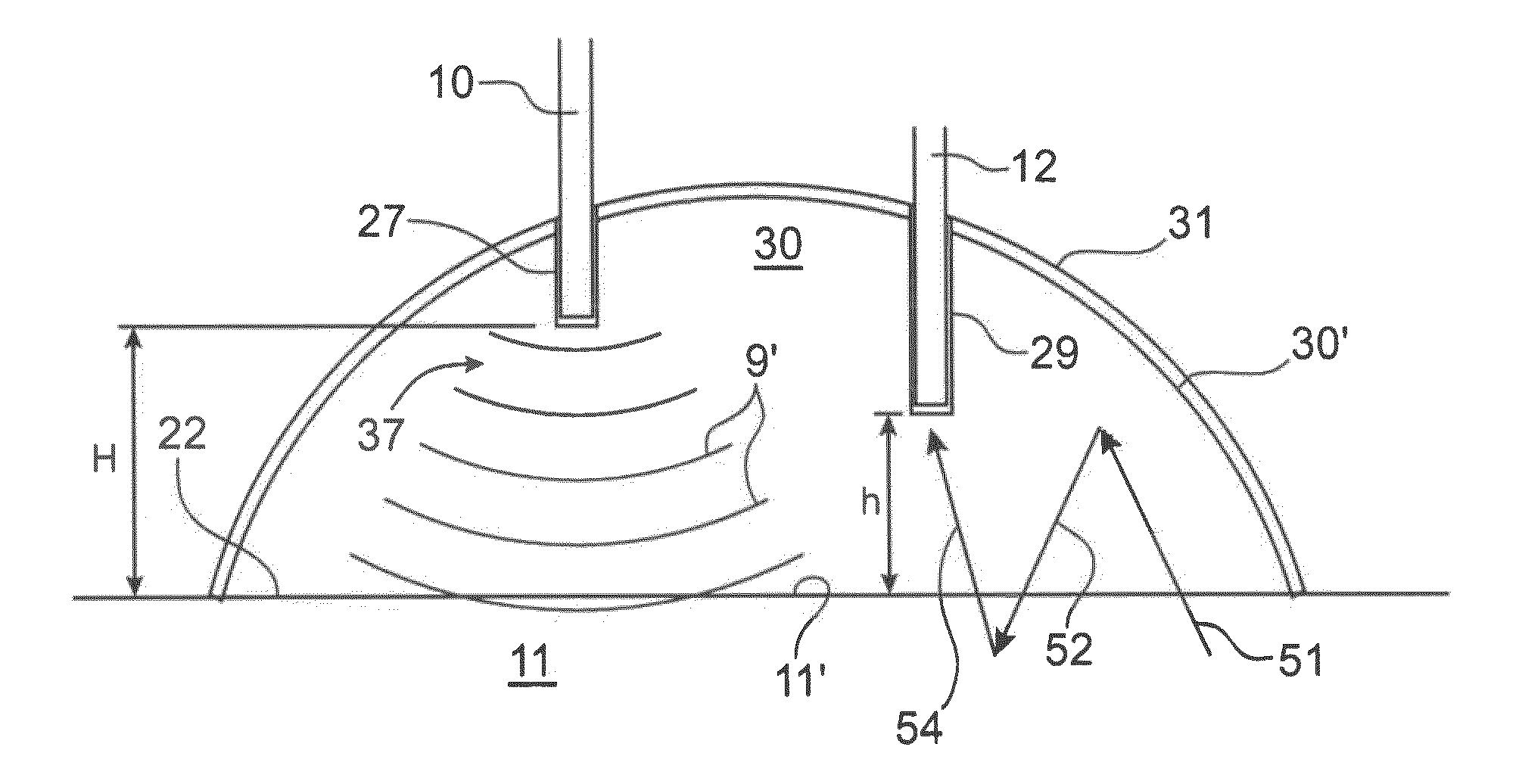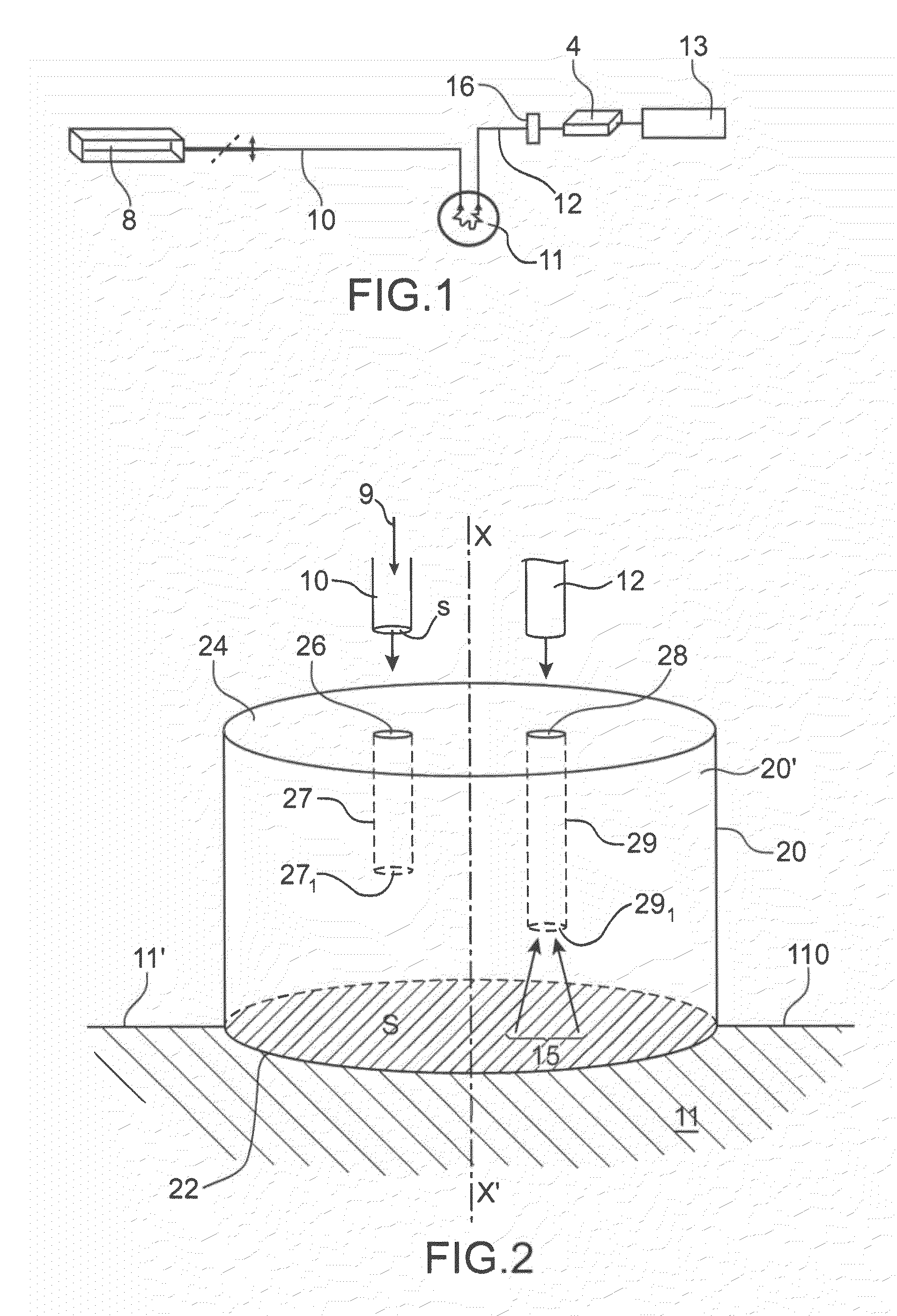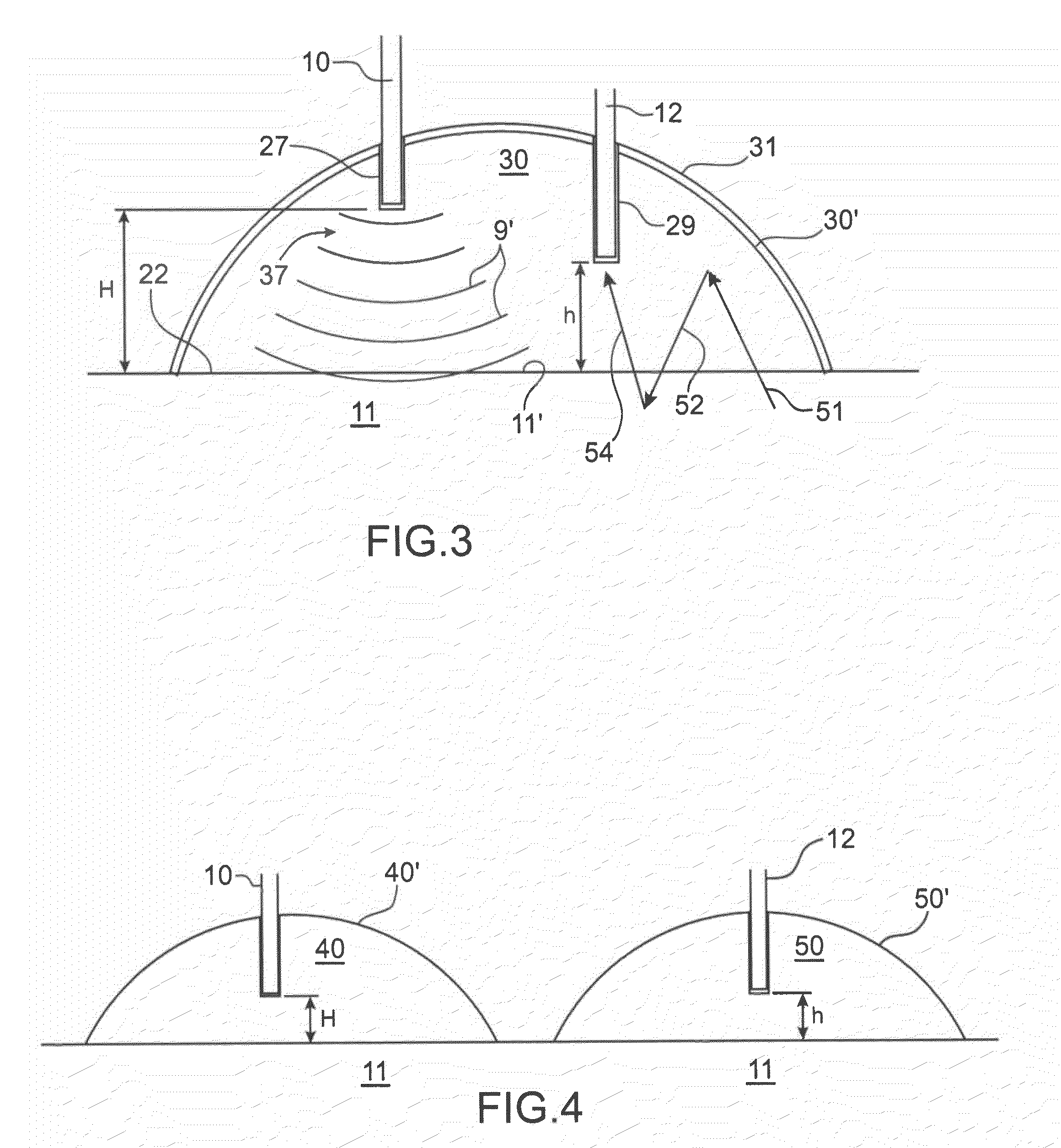Method and device for diffuse excitation in imaging
a diffuse excitation and imaging technology, applied in the field of diffuse optical imaging, can solve the problems of affecting the resolution of images, damage to the medium, and the temptation to inject high laser energy into, so as to facilitate and improve the reconstruction of the optical properties of the medium, improve the effect of signal collection
- Summary
- Abstract
- Description
- Claims
- Application Information
AI Technical Summary
Benefits of technology
Problems solved by technology
Method used
Image
Examples
Embodiment Construction
[0067]A first example of an embodiment of the invention is given FIG. 2.
[0068]This figure illustrates the fibres 10, 12 which respectively bring an excitation beam 9 (or more generally an incident beam) into a diffusing medium to be examined 11, and collect a fluorescent or diffusion signal emanated by this same medium.
[0069]In this example, the ends of the two fibres 10, 12 are inserted in an interface element 20 in diffusing material. In the remainder hereof the expression > will be used, but either of the terms > or > may be used indifferently in its stead. This matrix may be in a solid material, but it can also be in a soft, viscous or liquid material, in which case it is intralipid for example.
[0070]The matrix here is of substantially cylindrical shape, having two faces 22, 24 perpendicular to the axis XX′ of revolution of the cylinder. One of these faces (face 24 in FIG. 2) comprises two openings 26, 28 for two cavities or housings 27, 29. These housings are intended to receiv...
PUM
 Login to View More
Login to View More Abstract
Description
Claims
Application Information
 Login to View More
Login to View More - R&D
- Intellectual Property
- Life Sciences
- Materials
- Tech Scout
- Unparalleled Data Quality
- Higher Quality Content
- 60% Fewer Hallucinations
Browse by: Latest US Patents, China's latest patents, Technical Efficacy Thesaurus, Application Domain, Technology Topic, Popular Technical Reports.
© 2025 PatSnap. All rights reserved.Legal|Privacy policy|Modern Slavery Act Transparency Statement|Sitemap|About US| Contact US: help@patsnap.com



